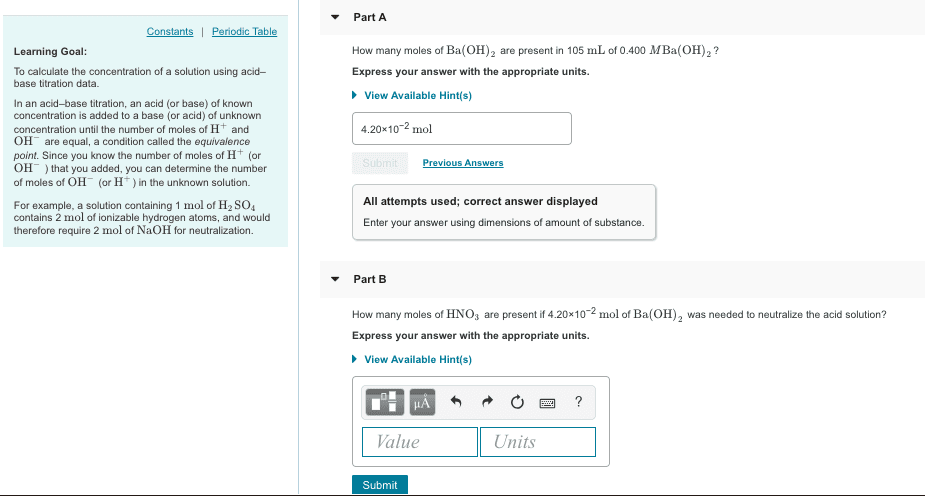CHM 111 Lecture Notes - Lecture 7: Equivalence Point, Methyl Red, Titration


26
CHM 111 Full Course Notes
Verified Note
26 documents
Document Summary
The principles of acid-base neutralization and stoichiometry can be applied to a common laboratory procedure called a titration. In a titration, a substance in a solution of known concentration is reacted with another substance in a solution of unknown concentration. Used to measure the concentration of oxidant or reductant in solution (aq) + oh- (aq) Suppose that the chemical equation for said reaction is represented as: The net ionic equation for this reaction is as follows: In titrating this sample, we slowly add a solution of known oh- (cid:272)o(cid:374)(cid:272)e(cid:374)t(cid:396)atio(cid:374) (cid:894)(cid:272)alled (cid:862)standard solution(cid:863)(cid:895) to a(cid:374) hcl solutio(cid:374) of u(cid:374)k(cid:374)o(cid:449)(cid:374) (cid:272)o(cid:374)(cid:272)e(cid:374)t(cid:396)atio(cid:374), s(cid:449)i(cid:396)li(cid:374)g the flask e(cid:448)e(cid:396)y ti(cid:373)e (cid:373)o(cid:396)e solvent is added. As the oh- is added, it reacts with, and neutralizes h+, forming water. At the equivalence point, the point in the titration when the number of moles of oh- equals the number of moles of h+, the titration is complete.



